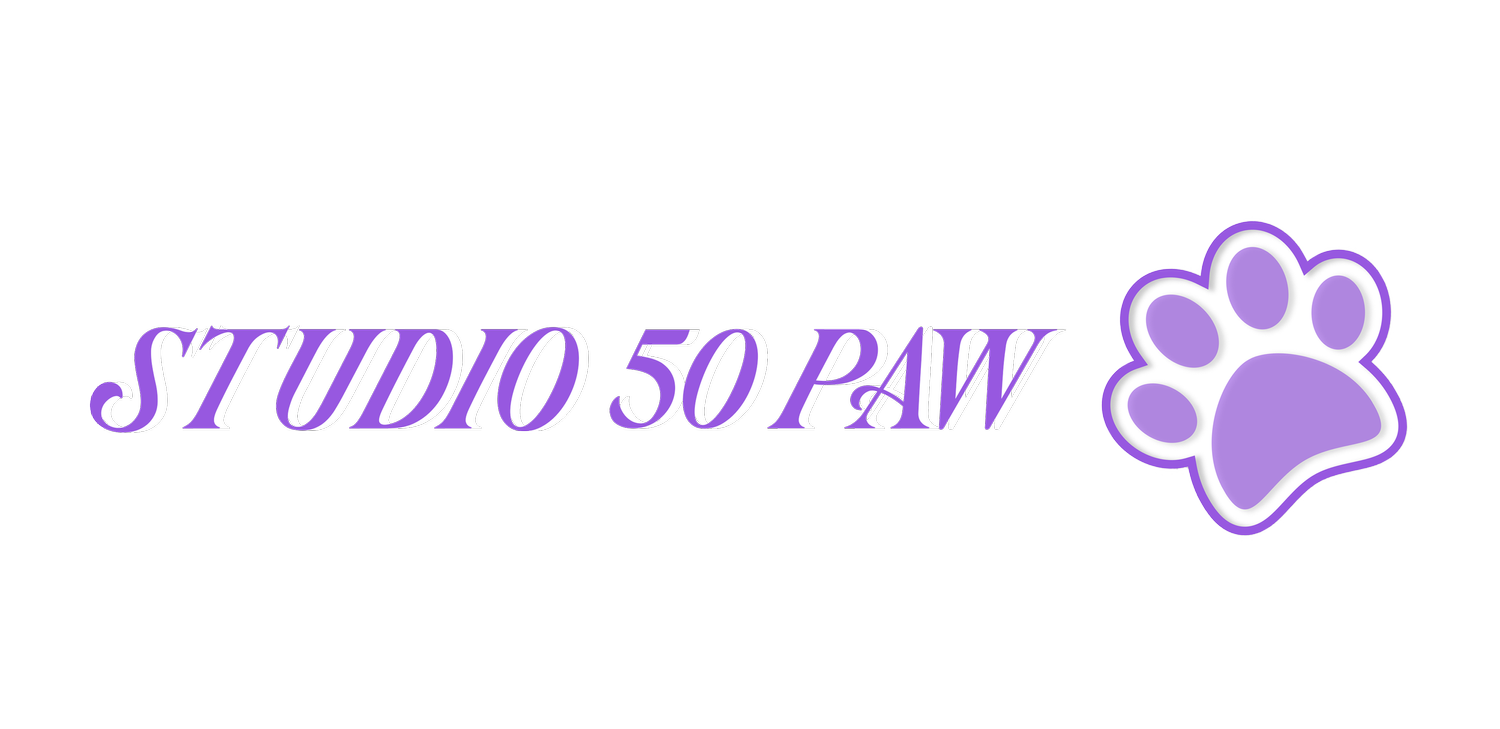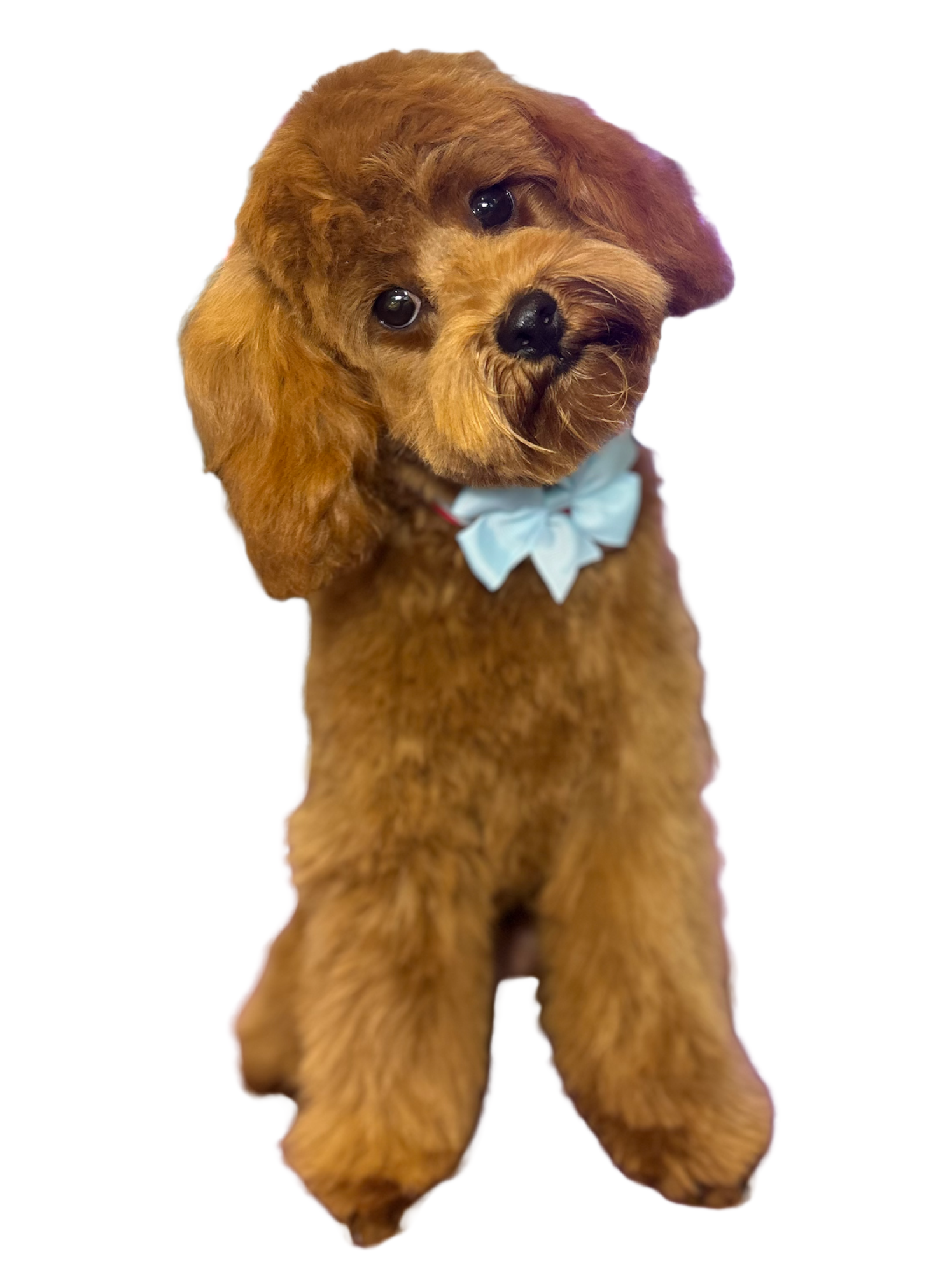Puppy Help Guide
“Why do I need to do this?”
Your pup will be far more comfortable with you than with a stranger! Getting puppies used to the sensations associated with a groom is fundamental in establishing a positive association with grooming going forward. It can be a very overwhelming and intimate process, so the earlier you start introducing them to it and making it as fun and comfortable as possible, the easier and less scary it will be for your pup!
In this pamphlet, you will find helpful tips and information to begin the journey.
Your dog can start being professionally groomed as soon as they have had their third vaccination! When you have it booked in, call us to make an appointment.
It's very common for puppies to exhibit signs of fear, anxiety or distress during grooming, or when on their way to the groomers in anticipation. It's important to provide comfort and encouragement. Making grooming a positive experience is key, and incorporating treats alongside verbal praise and physical affection can motivate your dog to enjoy the process while providing a helpful distraction.
As groomers, we will always do our best to work within your dog's capabilities and create an environment where they feel safe and happy, but there is only so much we can do during the groom. This is why it is so important for you to continue exposure at home! Over time, they will acclimate to the grooming experience, which can alleviate their anxiety and help them stay calm. Some dogs even end up coming to love being groomed and get excited to see us!
Remember, dogs feed off your energy! For all aspects of dog grooming and maintenance, ensuring you are confident in your technique is important. Talking to your groomer and asking your veterinarian to demonstrate are good steps! Another great way to develop safe grooming skills is to watch dog grooming videos.
Not all brushes are the same, and using the wrong brush can take you a step backward! It can be tempting to get any old brush, but this can create more matting and damage your pup's coat. The coat type, length, and severity of matting all play a part in determining which brush is best.
We have a pamphlet with information and a basic guide, but for more details and in-depth instructions, scan The QR Code.
Brushing is a big part of grooming and is done at every step. When dogs have knots or matting, this process becomes painful, like when you try to brush a knot out of your hair. Matted hair twists and becomes tighter and more compacted over time, which pulls on your puppy's skin and hurts! Not to mention all kinds of dirt and bacteria that can become trapped and grow. It becomes overwhelming, stressful and painful for your pup when there are mats - this is why the groomer will opt for cutting or shaving them out.
Establishing a good grooming routine is essential, especially for dogs with long hair (looking at all you oodles!). For puppies, it’s important to help them get accustomed to the sensation of brushing. Light brushing a couple of times a week, for no more than 10 minutes each session, is a great starting point. Alternating where you brush - one night one leg, another night the ears, etc - is one way to ensure all bases are covered while not overwhelming your pup. It’s important to focus on your dog’s face, neck and “underarms” when grooming, as these areas are frequently handled and tend to develop mats more quickly than other parts of their body. Regular attention to these regions can help keep your dog's coat healthy and prevent tangles.
“What is desensitising and why do I need to do it?”
Desensitising is a fancy way of saying “let’s get your dog used to being touched”. Although most dogs love cuddles and pats, the physical touches of a groom are a bit different. Groomers also have to touch almost every part of your dog, and some of these areas are much more sensitive, as they aren’t places you would typically focus your attention when playing and cuddling.
Make sure to touch your puppy regularly to help desensitise them. This includes gently touching and holding their paws, tail, face, and ears. Focus on holding their face gently, especially the hair under their chin, if the hair is long enough. Additionally, lightly squeeze their feet and toes to help them become accustomed to having their nails trimmed.
Making grooming a positive experience is key, and incorporating treats can motivate your dog to enjoy the process while also providing a helpful distraction.
BONUS DESENSITISING: To help your dog become accustomed to the sensation of grooming tools, use things at home like the handle of an electric toothbrush or electric shaver. Gently rubbing it against your pup can familiarise them with the feeling, making the grooming process smoother and less stressful when the time comes to use clippers.
Using a hairdryer is very beneficial, even if only for a short duration. The sounds and sensations of a hairdryer are very similar to what they will experience during a groom, so it is a great way to introduce them to the process!
“I have been doing what you said, but they’re not getting used to it.”
Be aware that it may take up to a year for puppies to become fully comfortable with grooming routines. This process can be lengthy and challenging, but the rewards are well worth the effort. Gentle handling and the use of rewards for calm behaviour are a must! For dogs that are particularly restless, consider using peanut butter on a spoon as an alternative to standard puppy treats, as it takes more time and focus for your pup to eat it all, providing a yummy physical and mental distraction.
Remember, even small advancements in your puppy's comfort level are significant and should be recognised as progress!
It's important to pay attention to their face, as this area is the most sensitive and may require extra time for them to become accustomed to handling. Regular brushing can help with this adjustment process.
Your dog's hair will likely change as they shed their puppy coat, becoming thicker and requiring regular maintenance, which is why getting your puppy into a routine and working on desensitising them as early as possible is vital!
Sometimes, despite our best intentions and all available advice, dogs are so anxious about some aspect of grooming that it becomes a stressful and unsafe experience for all. In this case, it’s best to speak to your veterinarian, who will advise on the best approach for your pup depending on the level of your dog's anxiety. These may include mobile hydrobaths, a professional mobile groomer (who comes to you), or contacting a groomer who is specialised in behavioural grooms. In some cases, a mild relaxant or sedative might be recommended and prescribed by your veterinarian“Can I wash my dog at home?”
Absolutely! Life gets messy, and things happen between grooms, and nobody wants a muddy puppy running around getting dirt on everything! It is generally recommended to avoid washing your dog more frequently than once every two weeks. Ideally, aiming for a monthly wash is preferable, as excessive bathing can strip away the natural oils and potentially lead to skin problems.
Using a hairdryer to dry them afterwards is very beneficial, even if for a short duration. The sounds and sensations of a hairdryer are very similar to what they will experience during a groom, so it is a great way to introduce them to the process. It's important to give special attention to their face, as this area may require extra care and take longer to adjust.
There are several ways of bathing your dog, but the most important points are to brush your dog first, use warm water, massage the shampoo all over (avoiding the eyes and flushing with water if any gets in), rinse off thoroughly and dry as much as possible. Dogs need a shampoo that is specifically designed for them, as human shampoo can damage their skin.
Your veterinarian can advise whether or not your dog needs a medicated shampoo, so it’s important to ask their advice before bathing a dog with any skin problems.
For smaller messes, we recommend spot cleaning! Spot cleaning can be done with a wet cloth or baby wipes (there are now also specific pet wipes!) to target specific areas, such as the paws, ears and hygiene area - especially for puppies that are still mastering their toilet training.



